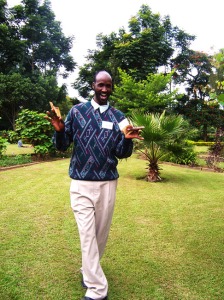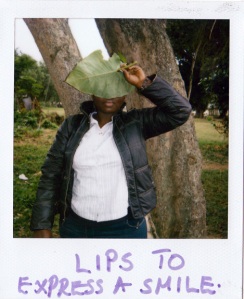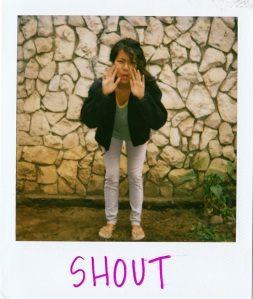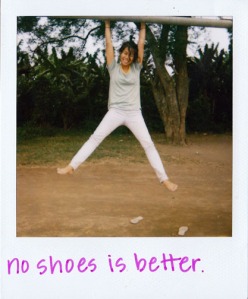Like most people visiting the continent of Africa for the first time, I had no idea what to expect. My schema was a hazy one, as series of National Geographic photos stitched together. I was eager to put this vision to the test, ready to cast aside any misconceptions and immerse myself in a new culture.
We flew in at nighttime, thus our view was shrouded in darkness the entire drive from the airport to the apartments. We went to sleep completely clueless about our surroundings. It wasn’t until the next morning, when I was startled from my sleep by the crowing of a very assertive rooster, that I finally got my first true glimpse of Arusha, Tanzania. Pulling aside the curtain eagerly, I couldn’t help gaping at the banana trees and plots in front of me. Women socialized while washed clothing and small children chased each other around. Hello, Arusha.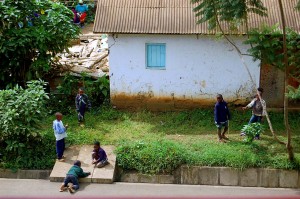
The view from our apartment window.
I soon discovered Arusha was the perfect place to begin. As one teacher informed me, Arusha is the most expensive town in Tanzania, due mainly to the flow of tourists that stay in Arusha when planning to go on a safari or climb Mt. Kilimanjaro. For this reason, the locals are a little more accustomed to tourists walking around. It is not uncommon for strangers in the street to approach you and start a conversation with you out of pure friendliness. Indeed, people often shout Jambo to us, gauging our Swahili abilities by our responses. It is an outgoingness that threw me off my first few days here. Suspicions aroused, I wondered what people were trying to sell me or where they were hoping to lead me whenever they approached, only to discover that many times they were simply curious about who I was.
After a few days drifting about the town getting familiar with our surroundings and situated in our apartments, our LTP workshops began. Our first workshop was scheduled to begin at 8:30 in the morning, so we all arrived early and waited eagerly for the teachers to arrive. When 8:30 rolled around and no teachers had shown up, we were a little surprised, but hardly alarmed. By 8:45, however, when only two teachers had shown up, it was clear everyone was nervous and concerned that none of the other teachers would show up. We would later learn that it was not uncommon for teachers to show up late – even to their own classes. This apparent disregard for the time was simply a part of Tanzania’s laid-back culture, something that was difficult for us goal and deadline oriented Americans to adjust to.

Hilary addresses one teacher’s questions.
Despite its late start, the rest of the LTP workshop went pretty smoothly. Some of the teachers were excited about using the cameras, while others were more concerned with how to integrate photography into their classrooms.
As the teachers trickled in, they were grouped so that two or three teachers worked together with two of us Duke students. As an icebreaker and way to get the teachers to think creatively about photography, Katie and Elena [LTP coordinators] handed out a photo to each group and had us analyze details in the photo. We (Duke students) had previously discussed these photos in a meeting, so it was interesting to see what new information the teachers were able to bring in to the discussions with their cultural background.
For the rest of the workshops, we ran through a series of exercises to demonstrate the utility of photography as a learning tool. One exercise, for instance, was to choose a subject (Math/Science, Geography, Civics…) and take photos of something related to that subject for each letter of the alphabet (ie-A is for algebra, B is for bacteria, etc.). French teacher Mary really enjoyed this exercise and expressed that she could easily use it to help students learn their vocabulary.

Mary taking a photo for the alphabet exercise.
Another exercise we did involved writing about a dream. Afterwards, we were asked to take photographs to represent these dreams. It was a fun activity for the teachers, but it also showed them how photography could really help open up class discussions and inspire writing. Mary & Fabian recreate Mary’s dream. At the end of the workshops, it was clear that many of the teachers had gained a better understanding of what LTP’s goals were. Everyone seemed to have enjoyed the workshops and learned a lot, but I was still dubious about them actually using what we showed them in their classrooms. For this reason, I feel especially driven to do a good job when working with students next week. Not only do I hope to inspire the students through my teaching, I also hope to show their teachers how viable it is to use photography in their own classrooms.

LTP in the Arusha Times!
